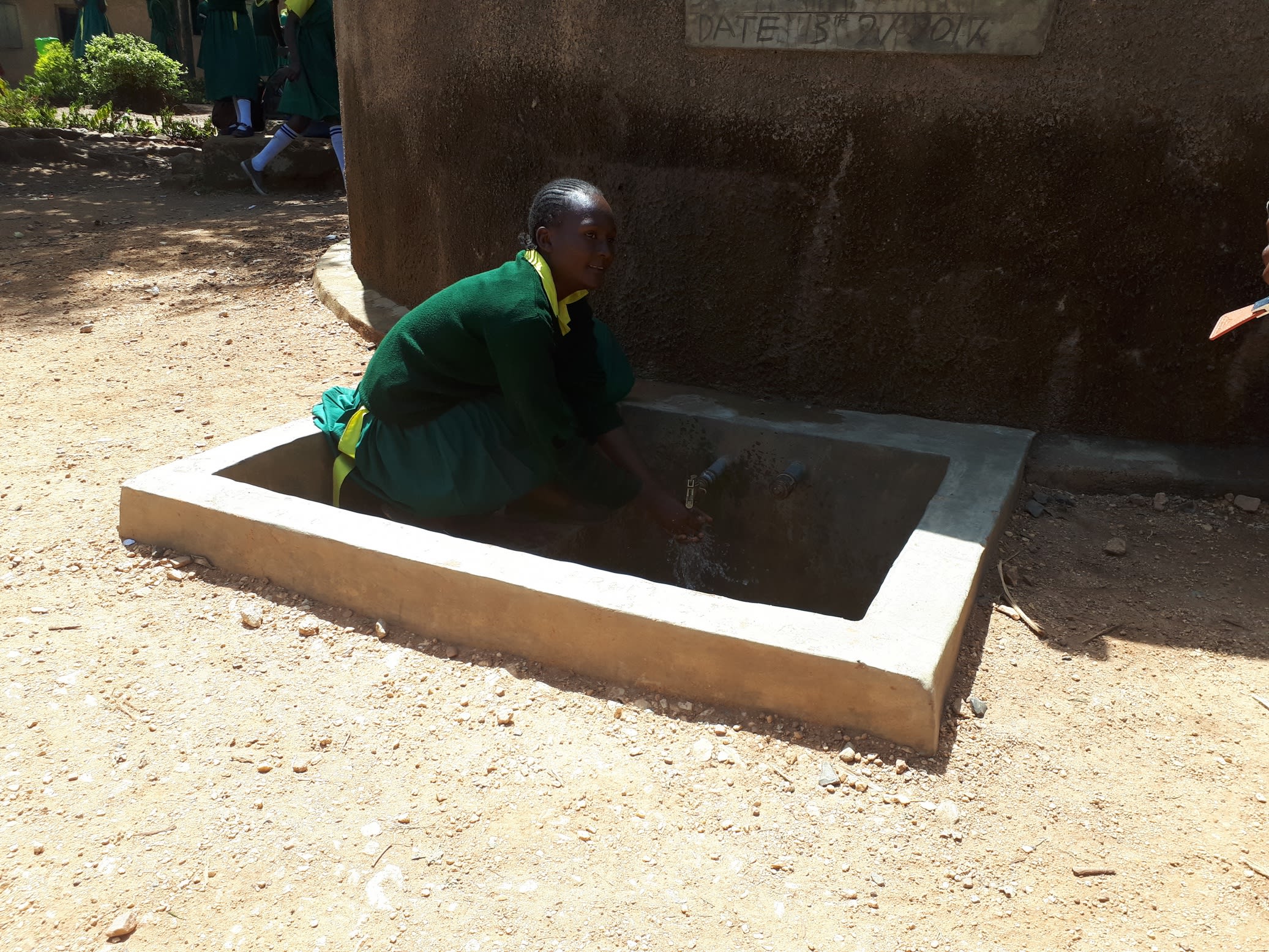This project is a part of our shared program with Western Water And Sanitation Forum (WEWASAFO). Our team is pleased to directly share the below report from Kenya (edited for clarity, as needed):
Welcome to the School
Mahanga Primary provides classes for 750 students of which 316 are boys and 434 are girls. The school employs 17 teachers and four support staff.
(Editor's Note: While this many people may have access on any given day, realistically a single water source can only support a population of 350-500 people. This community would be a good candidate for a second project in the future so adequate water is available. To learn more, click here.)
Students wake up no later than 5:30AM to prepare for school. Their walk to school includes stops to fetch water from different sources along the way. The more water a student can carry to school, the more time is saved for studying.
After morning exercises from 6AM to 7AM, students immediately start their cleaning routine. This involves sweeping classrooms and washing latrines.
Normal classes begin at 8AM until lunch at 12:45PM. When students return from lunch, students from upper classes are asked to carry water back to school in the same jerrycans they used in the morning. This is to help them clean their classrooms again in the evening before they go home.
The headmaster of Mahanga Primary witnessed the project that took place last year at Cheptulu Primary School. He brought an application letter directly to our office in Kakamega to invite us for a visit.
Water Situation
The school obviously doesn't have its own water source, nor does it have a place to store water that students fetch. Each student must fill a five or 10-liter with water each morning and afternoon to provide enough water for cooking, drinking, and cleaning. Most of the sources that students walk to are unprotected from outside contamination. One of these sources is Isaiah Magumba Spring, which can be seen in the "See Photos & Video" section.
After using this water, students complain of waterborne diseases such as typhoid, while many others have runny stomachs. These students miss class for days at a time.
Other students, though healthy, prefer to skip school to avoid continuous trips to fetch water.
Headmaster John Musalia said, "Since I came to this school, water has been a challenge and it's really interfering with studies. This is because water is life, and we cannot do without it. Many children have suffered from waterborne diseases as a result of taking contaminated water. On average, 10 pupils miss classes per day."
Sanitation Situation
There are six latrines for girls, six for boys, and two reserved for teaching staff. This means that there's one latrine for every 72 girls and one for every 53 boys! This shortage leads to long lines during break, discomfort, and tardiness returning to class.
Four latrines are totally full, but some students are forced to use them when they can't wait any longer in line.
There are no hand-washing stations for students or staff to use, but either way, there wouldn't be enough water to keep them full.
Plans: Hygiene and Sanitation Training and Hand-Washing Stations
Training will be held for two days. The facilitator will use PHAST (participatory hygiene and sanitation transformation), ABCD (asset-based community development), CTC (child to child), lectures, group discussions, and handouts to teach health topics and ways to promote good practices within the school. The CTC method will prepare students to lead other students into healthy habits, as well as kickstart a CTC club for the school. This CTC club will oversee the new facilities, such as hand-washing stations, and make sure they are kept clean and in working condition. The two hand-washing stations will be delivered to the school, and the club will fill them with water on a daily basis and make sure there is always a cleaning agent such as soap or ash.
Plans: VIP Latrines
Two triple-door latrines will be constructed with local materials that the school will help gather. Three doors will be given to girls, while the other three will be given to the boys.
Plans: Rainwater Catchment Tank
A 50,000-liter rainwater catchment tank will alleviate the water crisis at this school. The school will help gather the needed construction materials such as sand, rocks, and water for mixing cement. Once finished, this tank can begin catching rainfall that will be used by the school’s students and staff. Students will no longer have to leave their school in search of water!
We’re excited for this project to become a reality so that students and staff can focus on education. There will be an adequate source of clean water at Mahanga Primary School! We expect that health will improve and absences will decrease.

 Rainwater Catchment
Rainwater Catchment
 Rehabilitation Project
Rehabilitation Project






















